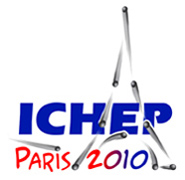Speaker
Imad Laktineh
(Lyon)
Description
The CALICE Collaboration is carrying out R&D for a highly granular calorimeter system, optimised for particle flow calorimetry at a future linear collider. Starting in 2006, a complete calorimeter chain (ECAL, HCAL and tail catcher) has been tested in muon, electron and hadron beams at CERN and Fermilab. Two electromagnetic calorimeters were tested, both based on tungsten absorber – one using ~10000 1x1 cm^2 silicon diode pads as the sensitive medium, and the other using small (1x4 cm^2) scintillator strips. The hadron calorimeter had an iron-scintillator sandwich structure, using ~10000 scintillator tiles read out using silicon photomultipliers (SiPMs).
We report here on the analysis of shower data, and the comparison of the results with GEANT4 simulations. Muons are used to calibrate all the detectors, and the study of the response to electrons is a crucial first step in the understanding of all the detectors. One of the main objectives of the analysis is the study of the hadron response, since this can be more difficulty to simulate reliably. Amongst the topics discussed will be the energy response of the system to hadrons, and the use of techniques of software compensation to improve the energy resolution. The high granularity of the calorimeters permit the comparison between data and simulations in unprecedented resolution; for example, individual tracks within the shower can be reconstructed, the start of the shower can be identified with high precision, and the longitudinal and transverse distributions of energy studied. These measurements provide interesting new ways of assessing the accuracy of the various physics models available in GEANT4. We also use the data to test features of the showers which are important for particle flow algorithms.
Much of the current work is now directed towards second generation prototypes in which more realistic mechanical designs and readout systems are employed. In 2010-11 a cubic prototype of a digital HCAL based on RPCs with 1x1 cm^2 readout will be tested at Fermilab. This calorimeter will contain ~40 active layers and the total number of readout channels will be close to 400,000, and will permit extensive tests of the digital HCAL concept, and evaluation of its suitability for particle flow applications. In addition, modules of an alternative design, intended to be as close as possible to the one proposed in the ILD LOI, is being produced. These will be based on 1m² gas-filled RPCs of 3 mm thickness and fully equipped with a semi-digital electronics readout. Further technologies are being developed within CALICE for the sensitive layers in a digital calorimeter, using either GEMs or MicroMegas, and these results will allow critical comparisons between different technologies to be performed.
Second generation prototypes are also being developed for two ECAL options – a Si-W calorimeter using 5x5 mm^2 pads with very thin sensors and readout electronics embedded in a very thin PCB, and a scintillator-strip option. A scintillator tile HCAL is also in preparation, using 3x3 cm^2 tiles, and the whole system will be operated in a mechanical structure close to that which is envisaged for the full-scale ILD detector. In all cases, the main focus will be the mechanical and electrical integration of realistic front-end electronics into the calorimeter absorber structure so as to create a high-density calorimeter. Issues such as temperature control and heat flow, and the impact of power pulsing of the electronics are to be addressed.
Primary author
Imad Laktineh
(Lyon)




